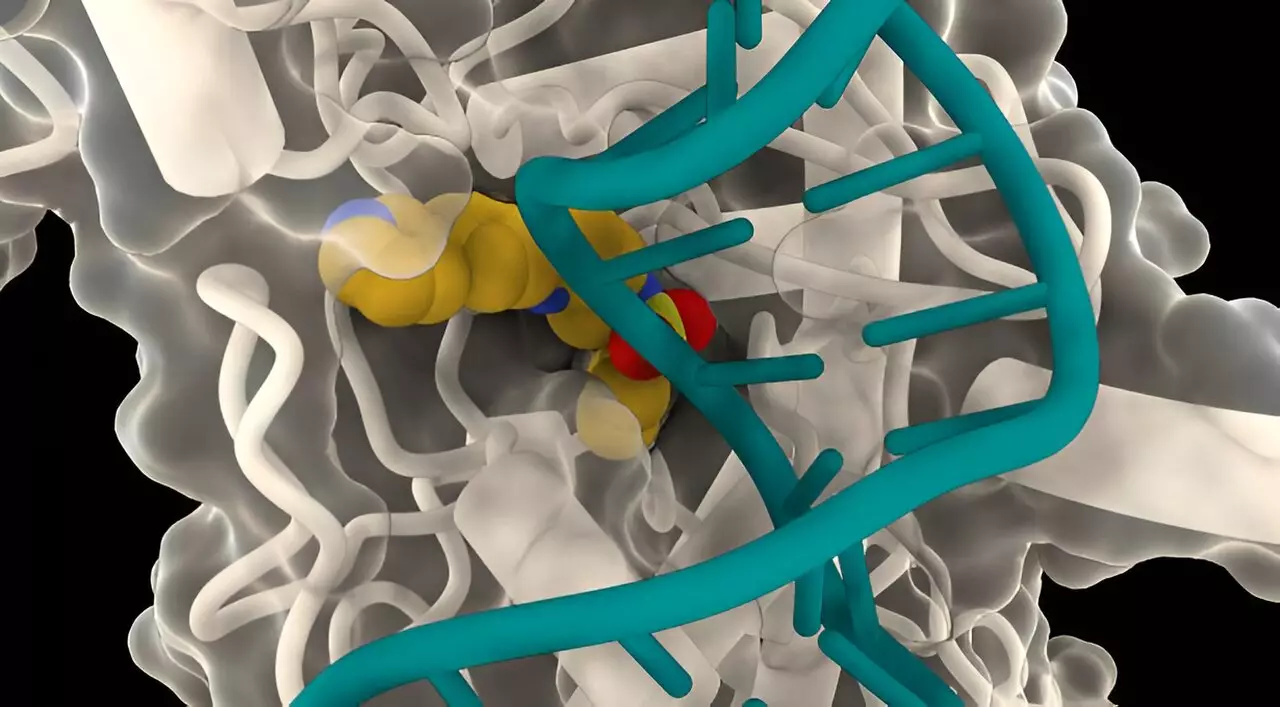In a recent collaborative research project between the University of Leiden and the John Innes Centre, a groundbreaking discovery was made in the field of antibiotic development. The project involved screening a chemical library of 352 small molecules that are currently being used in human therapies for cancer, but have not been tested for their antimicrobial properties. The screening identified a total of 12 compounds that showed inhibition of bacterial growth, with one particular compound standing out as the most potent. This compound, known as LEI-800, belongs to a class of compounds called isoquinoline sulfinamides and demonstrated significant antimicrobial activity against Escherichia coli and Klebsiella pneumoniae.
To further investigate why these compounds were effective in killing harmful bacteria, researchers selected naturally occurring resistant strains and discovered that all of them had mutations in genes encoding the bacterial enzyme DNA gyrase. This indicated that the compound’s target was the gyrase enzyme, which is essential for bacterial growth as it breaks and rejoins DNA to remove knots and entanglements. The groundbreaking aspect of LEI-800 was its ability to bind to E. coli gyrase in a unique way, inhibiting the enzyme from cutting DNA. This innovative mechanism of action offers a new line of defense against drug-resistant gram-negative bacteria.
The search for new antibiotics is considered a global health emergency, with drug-resistant gram-negative bacteria posing a significant threat to public health. The development of LEI-800 opens up possibilities for the creation of an entirely new class of molecules that target bacteria resistant to existing drugs. According to Dr. Dmitry Ghilarov from the John Innes Centre, the repurposing of existing compounds for antibiotic development is a cost-effective approach that can lead to the discovery of novel treatments. By utilizing the unique binding pocket of LEI-800, researchers believe that it could be used in combination with existing antibiotics to enhance their effectiveness.
Dr. Ghilarov expressed optimism about the future implications of this research, stating that the approach used in this study could lead to further discoveries in antibiotic development. The ability to repurpose existing compounds for new medical uses highlights the complexity of biology and the potential for unexpected breakthroughs. As seen with well-known examples like aspirin and Viagra, repurposing drugs can lead to significant advancements in medicine. Moving forward, the next steps for researchers are to optimize LEI-800 further and progress towards clinical trials and eventual commercialization.
The discovery of LEI-800 and its unique mechanism of action represent a significant advancement in the fight against drug-resistant bacteria. By repurposing existing compounds and uncovering their hidden potential as antibiotics, researchers have opened up new possibilities for combating infections that are resistant to current treatments. The innovative approach taken in this study highlights the importance of thinking outside the box in antibiotic development and offers hope for the future of medicine.


Leave a Reply